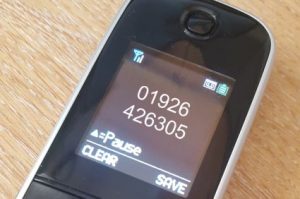MOT Guide
If your car is properly maintained and in good condition, the current MoT shouldn’t pose too many problems. However, perhaps because of lack of time or preparation, your car fails the MOT. This is a most annoying and frustrating part of car ownership. Spending a few minutes going through the basics can give your vehicle a better chance of sailing through. With this in mind we have provided a basic MOT checklist Guide below and a brief guide in graphic form at the bottom of the page.
To see more detail click the Section headings.
MOT Test Guide
Inspection Guide for Classes 3, 4, 5 and 7 Vehicles (Private Passenger and Light Commercial Vehicle Testing)
Introduction
Definitions, vehicle classes, reasons to refuse to test a vehicle, narrow track vehicles, historic vehicles and inspection procedures for car and passenger vehicle MOT tests.
0. Identification of the vehicle
Registration plate (number plate) and vehicle identification number rules and inspection for car and passenger vehicle MOT tests.
1. Brakes
Brake condition and operation, service brakes, secondary brakes, parking brakes, anti-lock braking system (ABS), electronic braking system (EBS) and brake fluid rules and inspection for car and passenger vehicle MOT tests.
2. Steering
Mechanical condition, steering wheel and column or handlebar, forks and yokes, steering play and electronic power steering (EPS) rules and inspection for car and passenger vehicle MOT tests.
3. Visibility
Field of vision, condition of the glass, the view to the rear, windscreen wipers and windscreen washer rules and inspection for car and passenger vehicle MOT tests.
4. Lamps, reflectors and electrical equipment
Headlamp, position lamps, daytime running lamps, stop lamps, indicators, hazard warning lamps, fog lamps, reversing lamps, lighting ‘tell-tales’, trailer electrical socket, electrical wiring and battery rules and inspection for car and passenger vehicle MOT tests.
5. Axles, wheels, tyres and suspension
Axle, wheel bearing, wheel and tyres, tyre pressure monitoring system (TPMS), and suspension (including springs, shock absorbers, and suspension arms and joints) rules and inspection for car and passenger vehicle MOT tests.
6. Body, structure and attachments
Structure and attachments (including exhaust system and bumpers), and body and interior (including doors and catches, seats and floor) rules and inspection for car and passenger vehicle MOT tests.
7. Other equipment
Seat belts and restraint systems, airbags, anti-theft devices, horn, speedometer, speed limiter and electronic stability control (ESC) rules and inspection for car and passenger vehicle MOT tests.
8. Nuisance
Noise, exhaust emissions, engine malfunction indicator lamp (MIL) (sometimes called an engine management light or ‘EML’), and fluid leak rules and inspection for car and passenger vehicle MOT tests.
9. Supplementary tests for buses and coaches
Entrance and exit doors, emergency exits, passenger grab handles, steps and stair rules and inspection for bus and coach MOT tests.
10. Seat belt installation checks
Seat belt installation rules and inspection for vehicles fitted with more than 8 passenger seats and first used before 1 October 2001.



